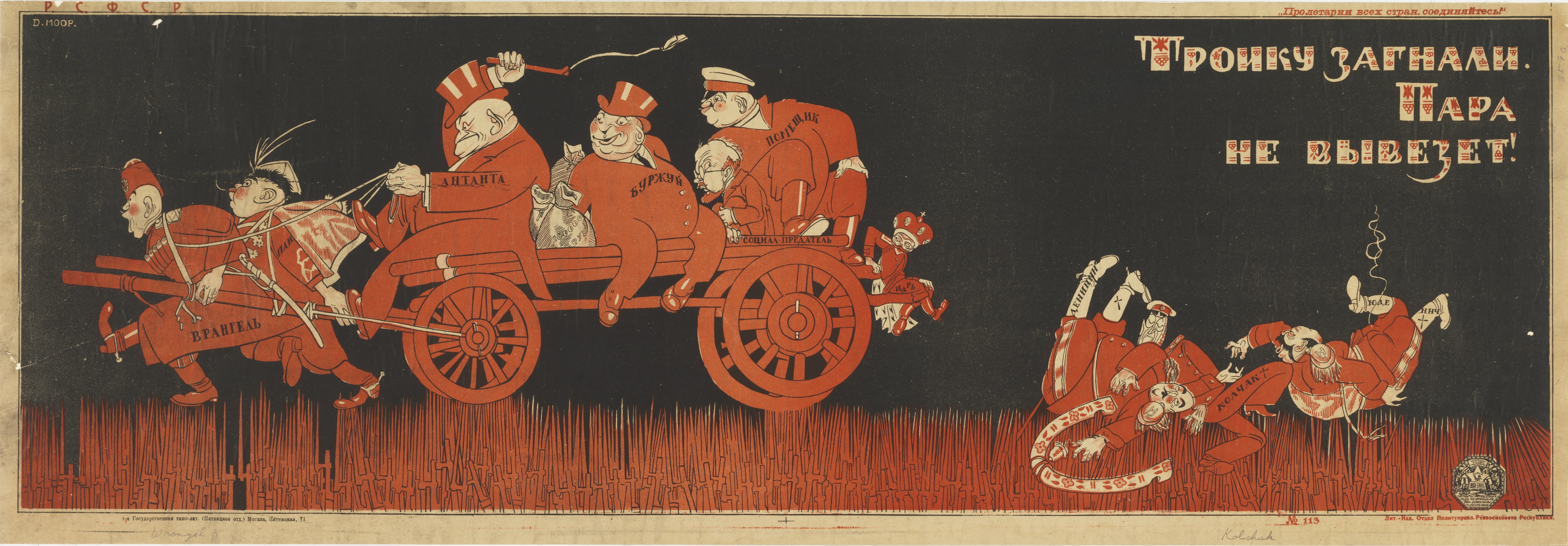In this Soviet poster designed by Dmitri Moor, cartoonish figures trek across a dark landscape transformed by war. Along the lower border, Moor substitutes bloody bayonets for blades of grass, implying that Soviet land is hostile to these travelers, all of whom are enemies of the Bolshevik cause. The poster satirizes Soviet adversaries in both the Russian Civil War and the war with Poland. White Army leaders Anton Denikin, Alexander Kolchak, and Nikolai Yudenich lie vanquished on the ground, while White General Pyotr Wrangel and Polish Marshall Józef Piłsudski struggle to pull a cart laden with symbolic figures of the Bourgeoisie, the landlords, the tsar, and the Western counterrevolutionary intervention (called the Entente). The text reads “Where a Troika Went Down, a Pair Won’t Do.” A troika is a cart drawn by three horses, but Moor uses the word to refer to the three fallen generals. Wrangel and Piłsudski drag the cart forward like horses, and Moor suggests that they will be defeated like the trio on the ground.
Moor’s lively caricatures of the enemy reflect the influence of traditional lubki, folk woodcut prints which had circulated in Russia since the 17th century, and depicted everything from fables and satirical stories to religious and moral teachings. Floral-patterned text also evokes decorative folk designs, in marked contrast to the bold, linear type of most Soviet posters of this period. Many of these posters championed the modernity of the revolution, but here Moor presents the campaign in more familiar terms. His vernacular aesthetic may have been intended for rural audiences, whose lives were destabilized by the violence and uncertainty which accompanied the revolution. With minimal text and a clear narrative, the poster would have been comprehensible to peasants who lacked the ability to read.
Virginia McBride was the 2014 Peter Krueger curatorial intern in the Department of Drawings, Prints, and Graphic Design at Cooper Hewitt, Smithsonian Design Museum. She studies art history at Kenyon College.
